FormFutura Volcano PLA White, 1.75 mm / 750 g
Industrial PLA with high heat resistance and robustness
$35.25 $39.22 -10%
($47.00 / kg, All prices excl. VAT.
-
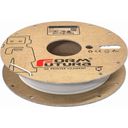
-
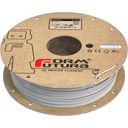
FormFutura
Volcano PLA Light Grey
Industrial PLA with high heat resistance and robustness
$31.33 $39.22($41.78 / kg) -
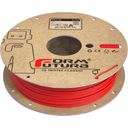
FormFutura
Volcano PLA Red
Industrial PLA with high heat resistance and robustness
$31.33 $39.22($41.78 / kg) -
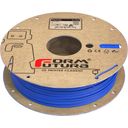
FormFutura
Volcano PLA Dark Blue
Industrial PLA with high heat resistance and robustness
$31.33 $39.22($41.78 / kg) -
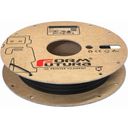
Features & Advantages
- Heat resistant up to ≥ 95 ° C
- Excellent mechanical properties
- Matt surface
- Excellent dimensional accuracy
Item no.: FF-VPLA-175WHTE-00750, EAN: 8718924479063
Product information & technical details
- Item no.: FF-VPLA-175WHTE-00750
- Manufacturer No.: VPLA-175WHTE-00750
- Manufacturer: FormFutura
- Diameter: 1,75 mm
- Product Line: Volcano PLA
- Product type: PLA Filaments
- Color: White
- Compatibility: Bambu Lab AMS*
- RAL colour: RAL 9010
- System: Spool
- Recommended processing temperature: 230 - 265 °C
- Recommended heating temperature: 0 - 60 °C
Description
Volcano PLA is an industrial PLA developed for professional applications and characterised by its high heat resistance and excellent mechanical properties.
Although the mechanical and thermal properties are very similar to ABS, Volcano PLA is easy to print and biodegradable.
Key features of Volcano PLA
- Easy to print
- High heat resistance ≥ 95°C after heat treatment
- Less than 0.3% shrinkage after heat treatment
- Approx. 8x less shrinkage than comparable materials
- Excellent dimensional accuracy BEFORE and AFTER heat treatment
- Designed for high print speeds
- Excellent mechanical properties
- Biodegradable
- Matt surface
Heat treatment of Volcano PLA
Heat treatment is a secondary process in which a plastic part is heated to half its melting temperature for a period of time.
When the plastic part is heat-treated, the material relaxes and internal stresses are reduced. This leads to improved dimensional stability and better physical and thermal properties of the printed model.
- Step 1
Preheat a fan oven to 110°C. It is recommended to use a thermostat so that the exact temperature can be set.
It is extremely important to preheat the oven to this temperature as this will reduce shrinkage.
- Step 2
Once a stable temperature of 110 °C has been reached, quickly place your model printed from Volcano PLA in the oven, making sure to avoid losing heat as much as possible.
Do not remove any support structures from the model before placing it in the oven.
It is recommended to place the model on a flat sheet of metal or aluminium to ensure even heat transfer.
- Small objects - 20-minute timer
For small objects with thin walls and little filling material, it will take ± 20 minutes.
- Large objects - 60-minute timer
For large objects with thick walls and more filling material, it will take ± 60 minutes.
- Step 3
Once you have heated your model sufficiently, turn off the oven and let it cool to room temperature.
Do not remove the object until the oven has completely cooled.
- Step 4
When the oven is completely cool, remove the model. You can now remove the supports from the model.
Your model is now thermally treated and has achieved all the mechanical and thermal properties indicated in the technical datasheet.
Filament spool dimensions
Downloads
Related products
Similar products
Questions & Answers about FormFutura Volcano PLA White
Customer Reviews
1 English review written for FormFutura Volcano PLA White
1 customer review in all languages
| 5 stars | | 1 | (50%) |
|---|---|---|---|
| 4 stars | | 0 | (0%) |
| 3 stars | | 1 | (50%) |
| 2 stars | | 0 | (0%) |
| 1 Stars | | 0 | (0%) |
2 reviews
1 customer review in English
1 customer review in all languages
Popular categories:
Discover 3DJake:
-
Delivery in 3 business days.
More than 10.500 products
We deliver worldwide to
more than 40 countriesSecure payments
with SSL encryption technology
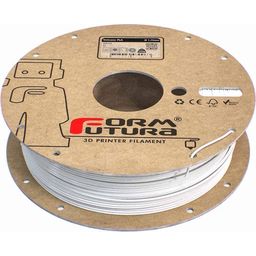

not as good as advertised
Rated with 3 out of 5 stars.
I needed it for a strong and heat resistant part in a car. I did some testprints but none of them where strong enough. FInally I used normal ABS which is much stronger than this Volcano PLA, and even normal PLA has better mechanical properties.
But the heat resistance is very good. There is almost no deformation during the annealing proces. FormFutura told me that the temperature during annealing is critical, but whatever I tried, none of the results had the promised strength.
So use it if you want an easy to print heat resistant model, but don't expect it to be stronger than regaular PLA.
Was this rating helpful? (3) (0)